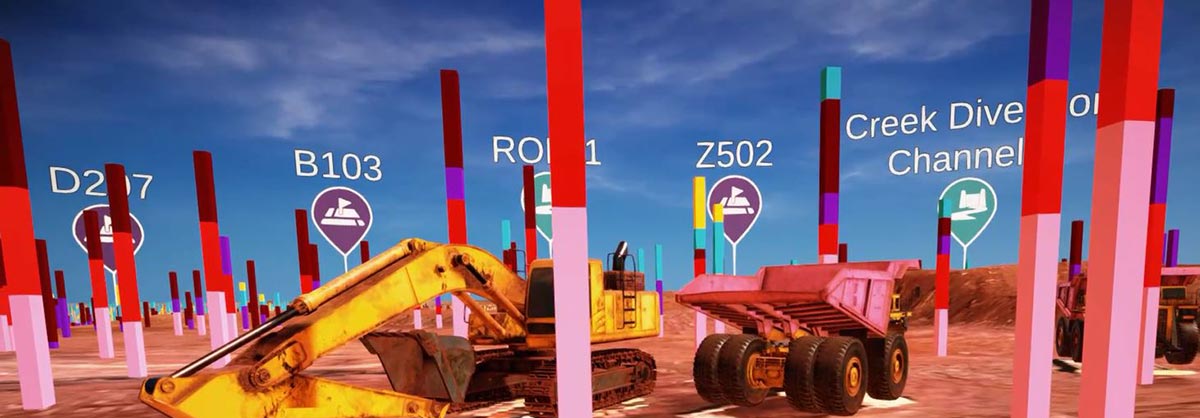September 2018 Issue Index
Maptek Roy Hill smart mining partnership
Maptek and iron ore producer Roy Hill are collaborating to leverage deep learning, AI and immersive technologies to accelerate orebody knowledge and inform upstream planning.
The world is facing rapid changes brought about by technology, globalisation and social values. Our personal and work lives are being increasingly disrupted, and the rate of change is accelerating.
Society is already adopting automation with plans for driverless trucks and cars. The mining industry is no exception, and the geoscience disciplines have been actively trialling and applying evolving technologies for many years to improve understanding and application of orebody knowledge.
Machine learning has been of interest to Roy Hill Superintendent Modelling, James Batchelor, for almost a decade and he is excited by the current co-investment project with Maptek.
‘I’m a strong believer of being in the right place at the right time. Technology projects were somewhat stymied by the GFC but many companies are now taking a different perspective towards innovation and technology.
‘While orebody knowledge and machine learning are in strong alignment, Roy Hill has taken this further with a deep learning approach to anything that can be classified and labelled. Orebody knowledge is a key component of the Roy Hill Smart Mine program, which aims to create tomorrow’s mine, today.
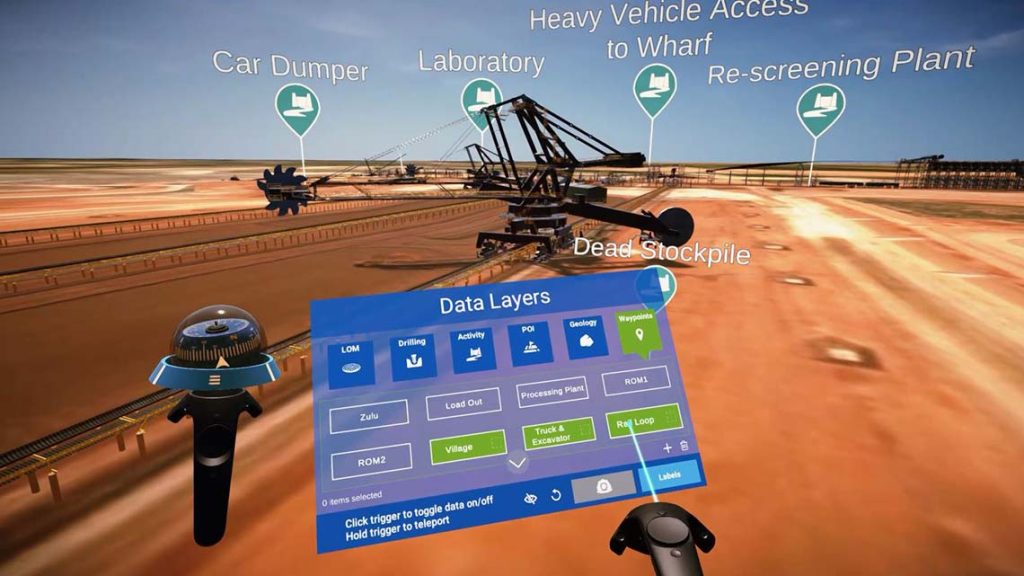
‘By ‘smart’ we mean applying our intelligence to critical thinking, creativity, and reasoning, and then combining this intelligence with social skills such as influencing, coaching and empathy to create and shape our future work. The outcomes will enable us to improve safety, increase productivity and deliver predictable performance for a sustainable operation.
Collaborative, agile approach
‘In June 2017 Roy Hill Technical Services held an Orebody Knowledge Workshop attended by key stakeholders, vendors and Executive Leadership. The aim was to acknowledge the great work completed by Roy Hill and its partners to date and tap into the wealth of expertise and experience to formulate an Orebody Knowledge Roadmap.
‘Orebody Modelling, has many touch points across the business from Ore Definition through to Technical Marketing, and formed a core component of the Digital Twin concept. As a long-term supplier of Vulcan software to Roy Hill, Maptek was invited to present and help generate new ideas to form a vision for the future of Orebody Modelling.
‘Ultimately, this led to the scoping of a co-investment project aimed at exploring and building innovative modelling tools and technologies. With help from the Technology, Commercial and Legal teams at Roy Hill this two-phase project went live at the end of 2017. Phase 1 encompassed improvement projects, with phase 2 focusing on R&D and innovation projects.
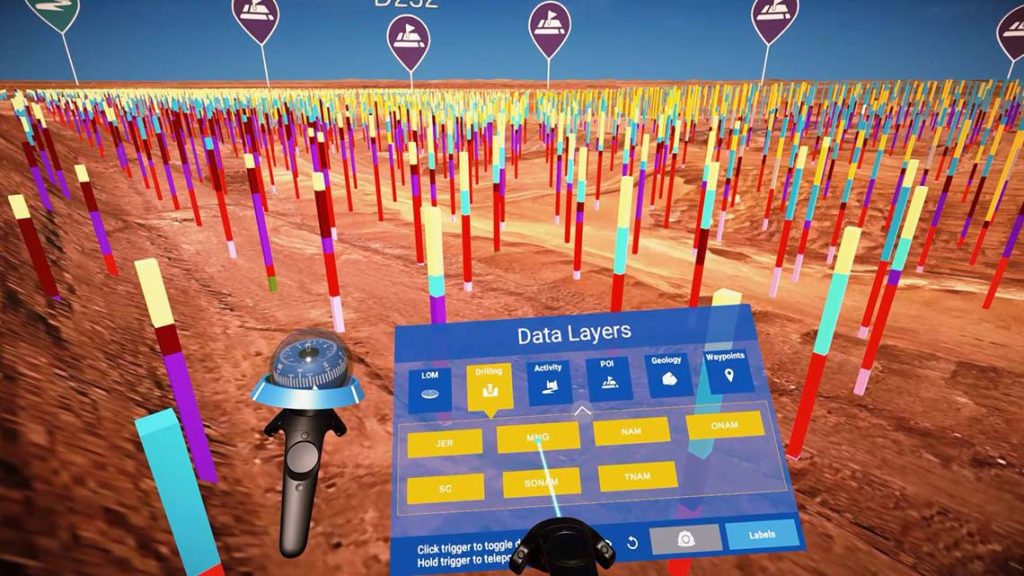
‘Roy Hill and Maptek met weekly to track progress and costs to ensure a standard approach. At the technical and thinking levels, however, the team was highly collaborative and agile. Capturing the best ideas, approaches and insights ensured that the end product enhanced the way business units work better, add real value, and provide a strong foundation for future innovation, standing the test of time.
‘Engagement with Maptek and the level of support and enthusiasm has been second to none. Like all innovative collaborations, our discussions are energetic, fluid and always insightful.
Challenging the way we think and communicate
‘The project introduces new technologies, and replaces or improves on previous approaches. The following areas are the five key enablers to success:
- Python programming with highly functional and efficient libraries to facilitate modelling AI among other developments.
- Workflow tools allow the wrapping up of scripts developed over time into a larger automated process.
- Powerful probabilistic resource estimation in the form of Multi-Gaussian Kriging.
- Immersive visualisation capabilities via collaborative development with companies such as LlamaZoo.
- Advanced enterprise level data management and democratisation.
‘The human brain is a phenomenal machine for dealing with large amounts of data. At the same time humans struggle with correlating massive datasets and have become dependent on computers to do the calculations.
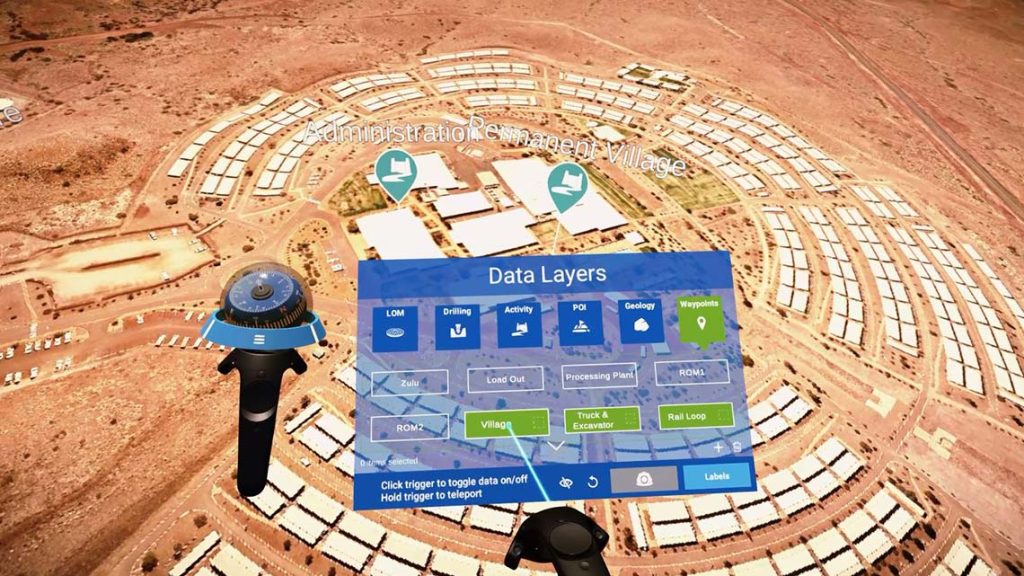
‘Machine learning algorithms have effectively replaced human thinking capability while also expanding on it, as they don’t suffer from the same constraints that we experience.
‘These new technologies and approaches have the ability to empower by freeing us from manual, mechanistic and repetitive tasks. AI will do the leg work while humans spend time developing new knowledge and insights in an environment where we can think, develop and collaborate as geoscientists.
Democratised technology and recognising inherent bias
‘Deep learning is a democratised technology – anyone can use it. A high level of excitement permeates across continuous improvement projects through R&D and beyond to the eventual positive impacts on people, culture and philosophy.
‘Innovation and modelling go hand in hand. Ten years of using Vulcan has raised a keen interest in using programming to rapidly manipulate datasets and replace boring, repetitive tasks. Being able to weave many imaginings and learnings into a range of technological solutions and tailor those solutions into something of value both to Maptek and Roy Hill has been very exciting.
‘The project has presented some profound challenges. The innovation journey involves recognising and managing cognitive bias and dissonance.The team faced a paradigm shift around what modelling is, how it should be done, and what needed to be achieved to ensure we are well positioned for tomorrow.
‘The machine can come up with an answer, it can come up with many answers, but it can’t make meaning out of them. It will be a long time before computers have the same level of cognitive functionality as the human brain.
‘The main outcome is the development of data relationships. When trying to make a prediction from very little information we can now actually generate something close to an answer, as well as the level of uncertainty. Previously, guesswork or drawing spurious correlations inspired no confidence whatsoever.
Learning to experiment and fail
‘The implementation of Machine Learning in various areas of the modelling process has ranged from Geological Classification and Risk Quantification to the prediction of previously unpredictable phenomena. New tools to experiment with allow us to fail fast.
‘Machine Learning can generate more reliable results than conventional methods with less effort, less data (even though it prefers more) and with a measure of uncertainty. Long gone are the days of defaulting to regressions, rules based logic and conventional interpolators to populate variables.
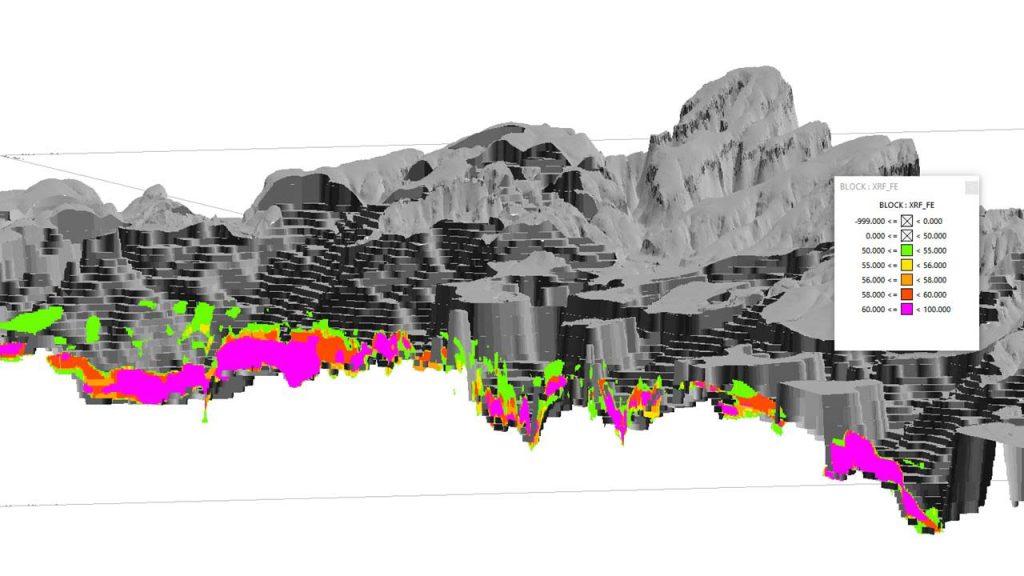
‘The initial results from the Deep Learning for Estimation project look fantastic. At a statistical level the data compares well with conventional approaches. One of the big challenges will be changing the way we think about modelling and estimation. Natural bias borne from our experiences tends to drive an expectation of a certain outcome.
‘Introducing AI means that the team needed to ‘rethink’ so as to we get the best value from the technology, unhindered by any cognitive bias. The biggest barriers to innovation are fear of failure and having too much experience. With so much experience there is the risk of becoming convinced that all the answers are available. When different evidence is presented, it may be dismissed out of hand.
‘To avoid this the team started implementing a ‘work-flowed’ approach, introducing new and advanced techniques and eliminating old processes.
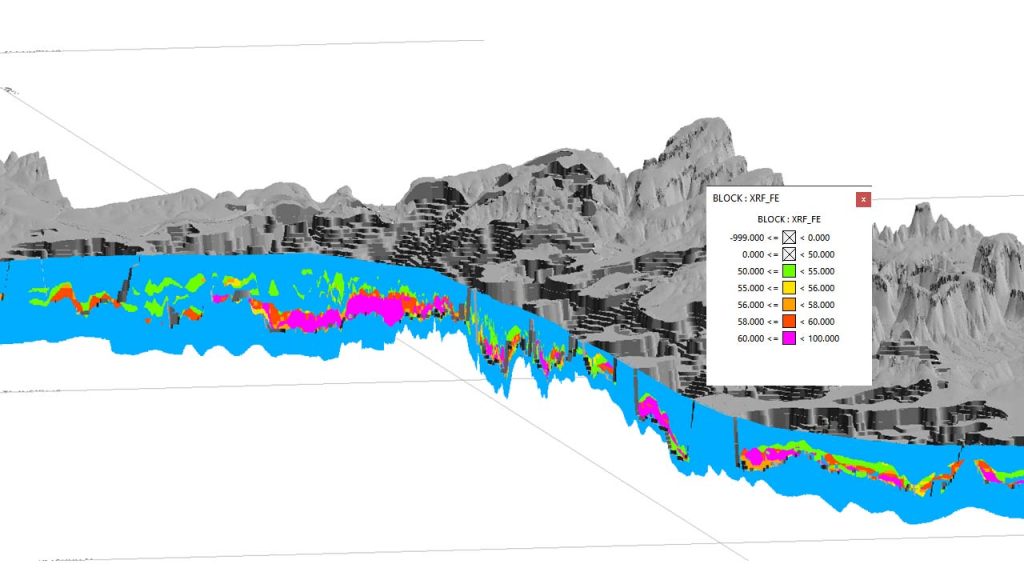
‘Output from the virtual reality work completed to date by Maptek in collaboration with LlamaZOO is amazing. The team is not aware of any other virtual reality (VR) package that builds the various components of a mining and exploration project into a high-performance solution so seamlessly and holistically.
‘A key aspect of VR is that it helps with how the team does something and how we communicate it. The visual medium is the best possible way to tap into communicating, making a huge difference to the viewer. Achieving both in the one project is the best possible outcome.
Driving cultural change
‘From the outset, our business drivers were improved efficiency and effectiveness, for example reducing the time taken to generate an answer, estimate or insight, and positive cultural change.
‘Roy Hill’s core cultural values are Lead, Care, Think and Perform. The project with Maptek will contribute to value in each by:
- Increasing the frequency of deep insights and generating better information and knowledge, thus enhancing the ability to make effective decisions, inspire our people and be effective leaders.
- Helping identify, quantify and mitigate risks thus reducing the likelihood of damage to people, plant and reputation.
- Freeing people of manual, mechanistic and repetitive tasks and processes, opening up a knowledge and insight enriched space in which to think, develop and collaborate.
- Ultimately, improving the way staff lead, care and think will have positive outcomes in the way employees perform.
‘There is still much work to do. Measuring success and value will begin there is a stable platform and baseline to work from.
Achieving our vision for the future
‘Maptek acknowledges the significance of the project in terms of applying a targeted effort in orebody modelling. The possibilities are endless and in many cases life changing!
‘Once the outcomes of the Maptek co-investment project are made available to the wider mining community it is likely to spark much debate and new thinking. Ultimately these technologies have the potential to change the what, how and why of mining in quite profound ways.
‘Several modelling projects are in the pipeline as well as closing out this phase of the Maptek project. The new approach is becoming mainstream for Roy Hill through engagement with other software vendors who apply AI and various data analytics teams.
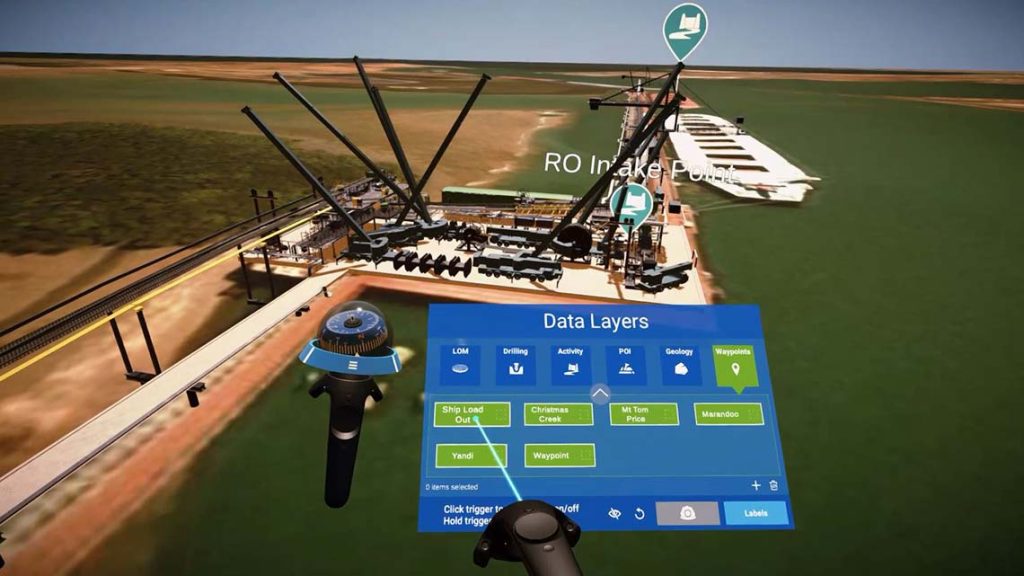
‘Together we’ve achieved some phenomenal outcomes on a very small budget. Working with a technology partner who understands our business has made it faster and a lot more effective. The engagement, collaborative effort and learnings have contributed to a wholly positive experience.
Maptek’s drive to build tools around this as a core function on their roadmap sets them apart.
‘Of course, there are still many unanswered questions. The maxim, ‘if you’re going to fail, fail fast’ applies. Don’t wear too much resource or financial pain.
‘Roy Hill has already used AI via the new Vulcan Python interface to facilitate the generation of at least 6 streams of information to make better decisions. There will be an inevitable cost benefit as well as a reduction in the time it takes to get to an acceptable outcome.
‘The team has had a very clear vision from the beginning, and taking an agile approach to achieving this vision has been a vital component of success. One key learning for future reference on collaborations such as this is to incorporate a training and development component to the program.
‘Maptek collaboration with Roy Hill on this project has seen all participants gain a greater appreciation for each other’s creativity. What this collaboration has achieved is a tribute to the passion, skills and singular focus on outcomes by all members of the team.
‘Maptek’s agility and ability to pivot as the project has evolved highlights its real strength – the team’s ability to think in a different way, instead of just looking to change a single process or system.’
Thanks to
James Batchelor
Superintendent Modelling
Roy Hill Iron Ore

